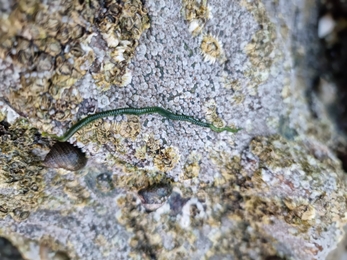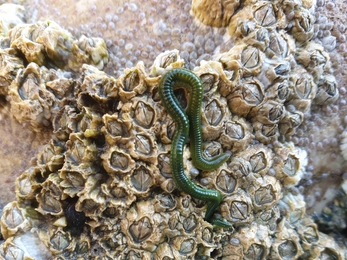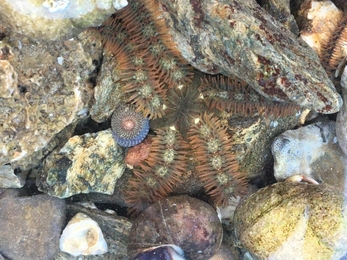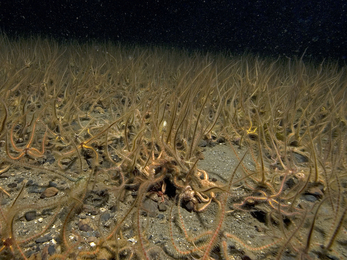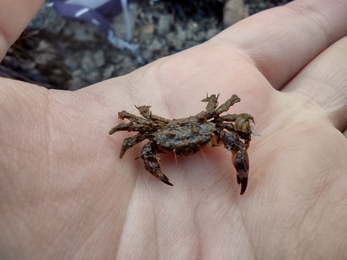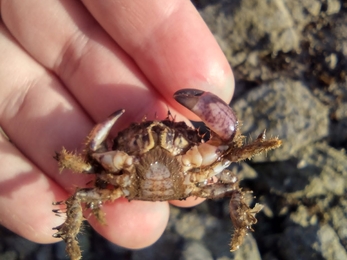The have-a-go surveys visited the Penmon, Llanfairfechan and Nefyn shores this month. The group Shoresearches were carried out at Menai bridge (Menai Strait & Conwy Bay / Y Fenai a Bae Conwy SAC; Glannau Porthaethwy SSSI), and North Shore Llandudno (Creigiau Rhiwledyn SSSI).
Surveys completed: walkover area 72m2; number of quadrats 21, timed species searches Slipper limpet – 50mins.
Number of volunteers: 12, number of new recruits coming to group surveys: 3; Have-a-go attendees: 10
Seasonal findings – Greenleaf worms (Eulalia viridis) were seen out and about on rocks, apparently feeding on the new barnacle larvae and spat that’s just landed on shore. These were found on both the group surveys, but those took place all on the one day, so is this a sight which is very limited in timing? This species is one of the paddleworm species to lay those green (sometimes flesh-coloured) eggsacs found on weed, and in sand pools etc and mentioned in March’s blog.


